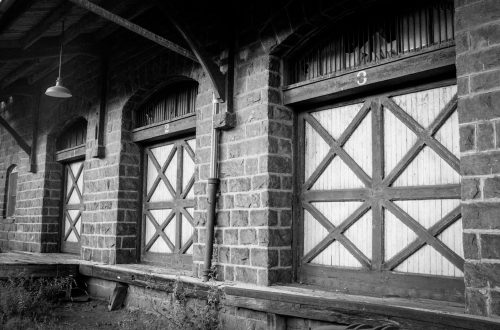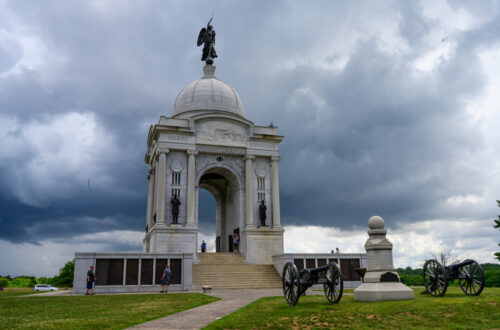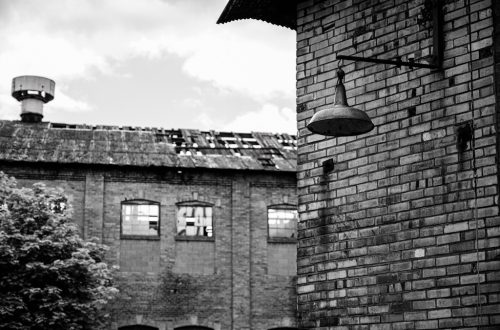Parnassus is Not Gone: A Non-Review of “American Elegy” by Jeffrey Simpson
When I found Jeffrey Simpson’s 1996 New York Times article about Parnassus two weeks ago, I was so excited that I posted a link to it on a Facebook page for local historical photos. Another member of the Facebook group replied that Jeffrey Simpson actually wrote an entire memoir about Parnassus, titled “American Elegy: A Family Memoir.” This Facebook member mentioned that the book was currently out of print but that several used copies were available on Amazon. I ordered it and I finished reading it tonight.
I am unable to write an impartial review of this book because the subject matter hits so close to home and I read so much of my own experience into this book. I was able to figure out the exact locations of several of the events in this memoir, as well as the homes of several characters, because I pass these every day. In fact, I figured out that in 1913, one of the households featured in this memoir lived in the house next door to our 1890’s Victorian house, in which I now sit and write this. This book is about the neighbors of the original owners of my house!
Per the review on Amazon from Publisher’s Weekly, “Simpson traces the life of this farming community from the 1770s, when his Scotch-Irish and German ancestors struggled to clear the wilderness, until the 1970s, when Parnassus, declining in population, died.” I personally found that most of the action occurs between the 1890’s until about the 1950’s, although the last chapter takes place in 1992.
I take issue with several items in “American Elegy.” One of those can be summed up in this passage from the last chapter: “Parnassus was gone, finally. Its name having been taken away sixty years before when it was consolidated with New Kensington, it had now decayed into a slum, the big old wooden houses partly veneered in garish sidings of purple, sky blue, and dirty pink, when I made the pilgrimage up the river one afternoon and drove through town under a lurid, thundery sky.”
Parnassus is not gone. My sister-in-law and her husband got engaged in my house in Parnassus last year on Christmas Eve. Last night they returned to Parnassus after their wedding to pose for a picture in front of the fireplace mantle where my now brother-in-law-in-law popped the question. They now live a block away from me, in their own Parnassus home. Parnassus was not gone in 2003 when I came to New Kensington for the very first time in my life to visit the house that my now-husband had purchased in Parnassus the year before. Parnassus was not gone when he walked me around the neighborhood one icy winter night a few months later to show me the architecture and the lit-up stained glass of the picture windows. Parnassus was not gone when we posed for pictures in front of our Parnassus home on our own wedding day. Parnassus was not gone when I sat on my front porch and watched a parade pass by my house. Parnassus was not gone in the spring of 2012 when we held a party here in our house to celebrate the baptism of our nephew and godson. Parnassus is not gone.
My Parnassus is not gone. The author’s Parnassus is in fact gone.
Although I don’t agree with Simpson‘s conclusion, I am glad that he wrote “American Elegy.” How many people get to say that they live in a neighborhood of such consequence that somebody else wrote a book about it? I really enjoyed learning about real events that happened on my street a century ago. For this reason, I gave the book five stars on Amazon. (Even though I personally have an ancestor who served in the Continental Army, a century ago my husband and I would not have been of the correct religion or economic class to reside at our current address.)
“American Elegy” devotes several pages to the St. Patrick’s Day Flood that devastated Parnassus, as well as Pittsburgh and most of Western Pennsylvania, in 1936. I wish that it had gone into more depth about this event. (Pun not intended. By the way, I once saw a 1936 photo of our house, surrounded by the floodwater.) I also wish that the memoir provided more information about the family who owned our house. However, this is just me reading my own experience into somebody else’s memoir.



6 Comments
Sarah
Can I borrow this book?
Jenny
Oh, don’t worry, Sarah! Your entire family will have ample opportunity to read it. I want to be able to discuss it with you all.
Mom
Great blog entry! Lots of caring people live in your neighborhood.
Pingback:
Pingback:
Pingback: